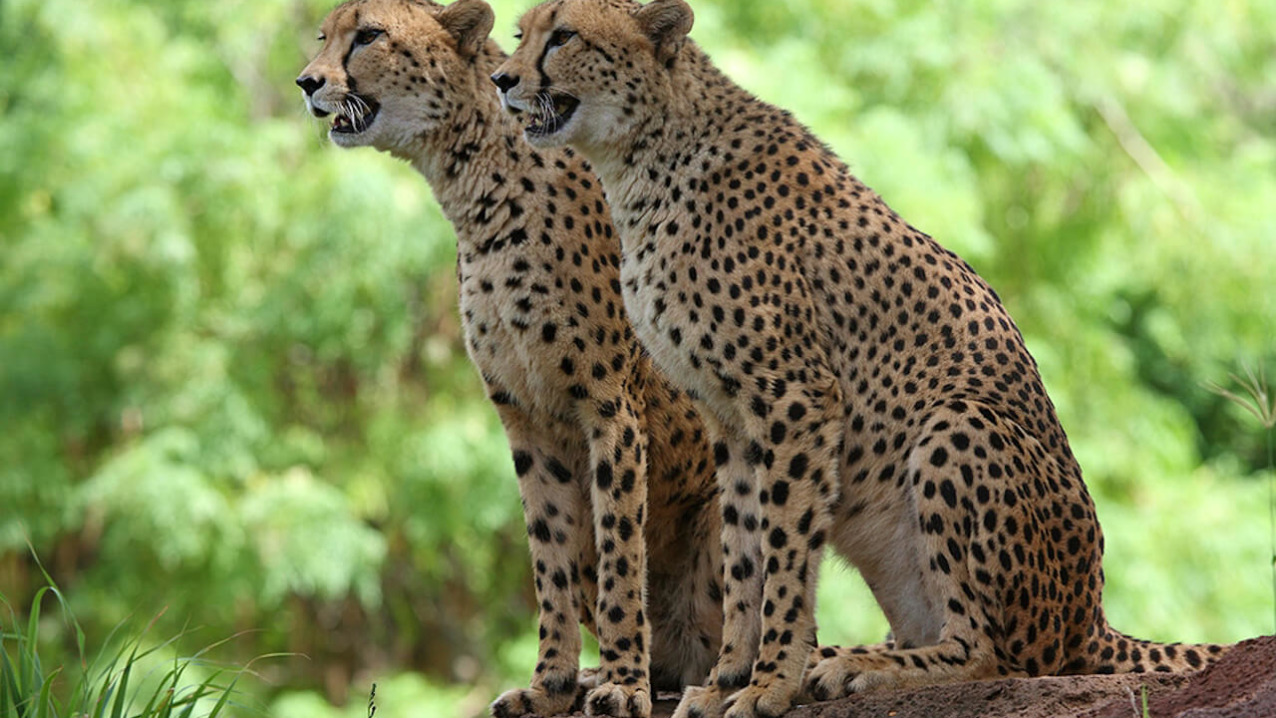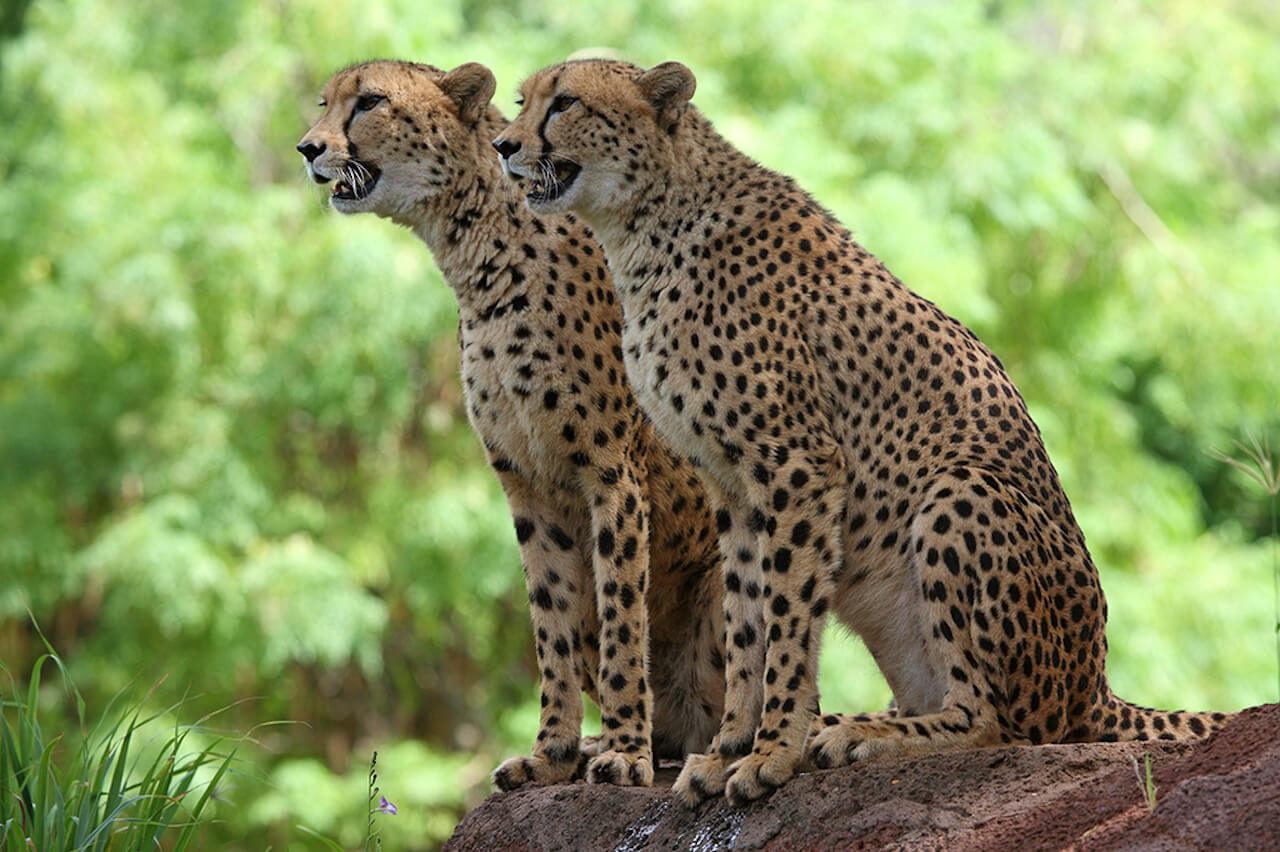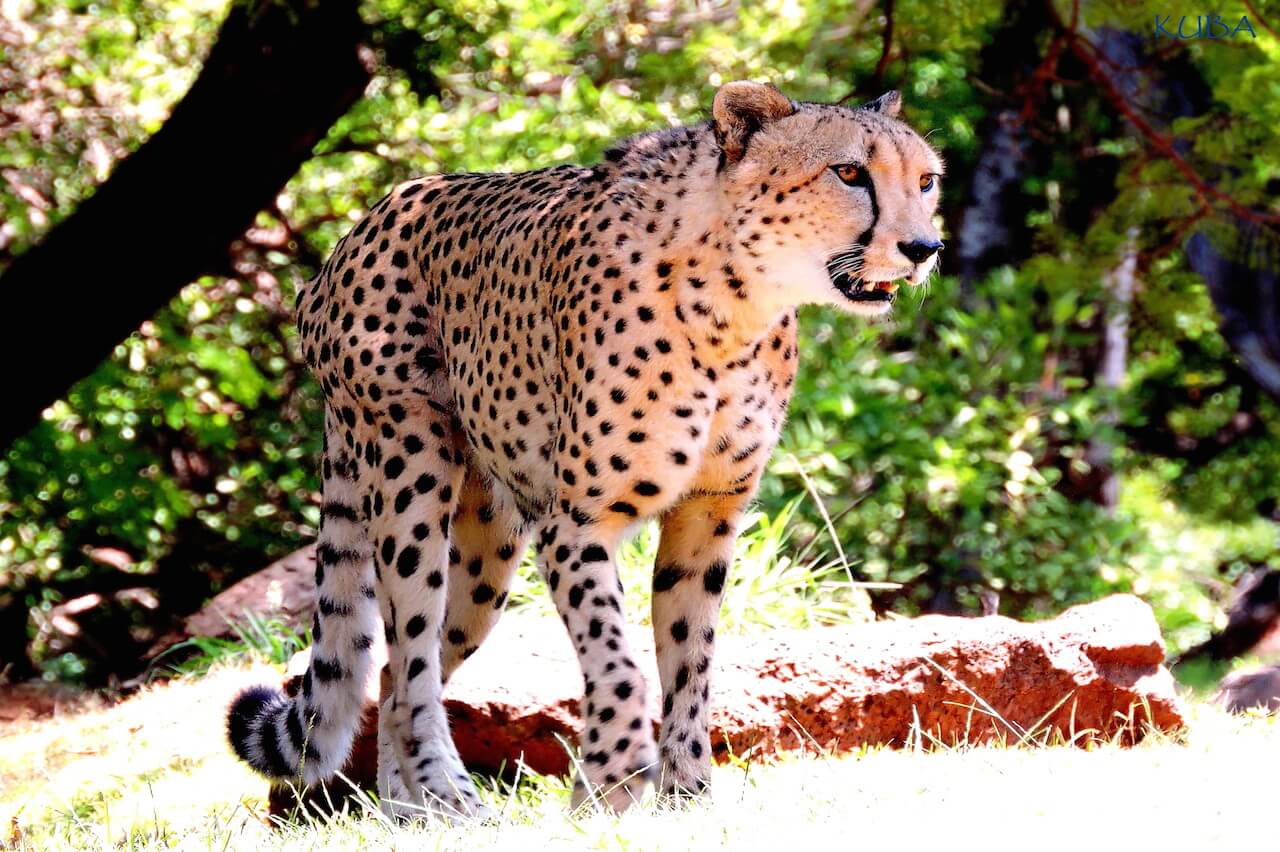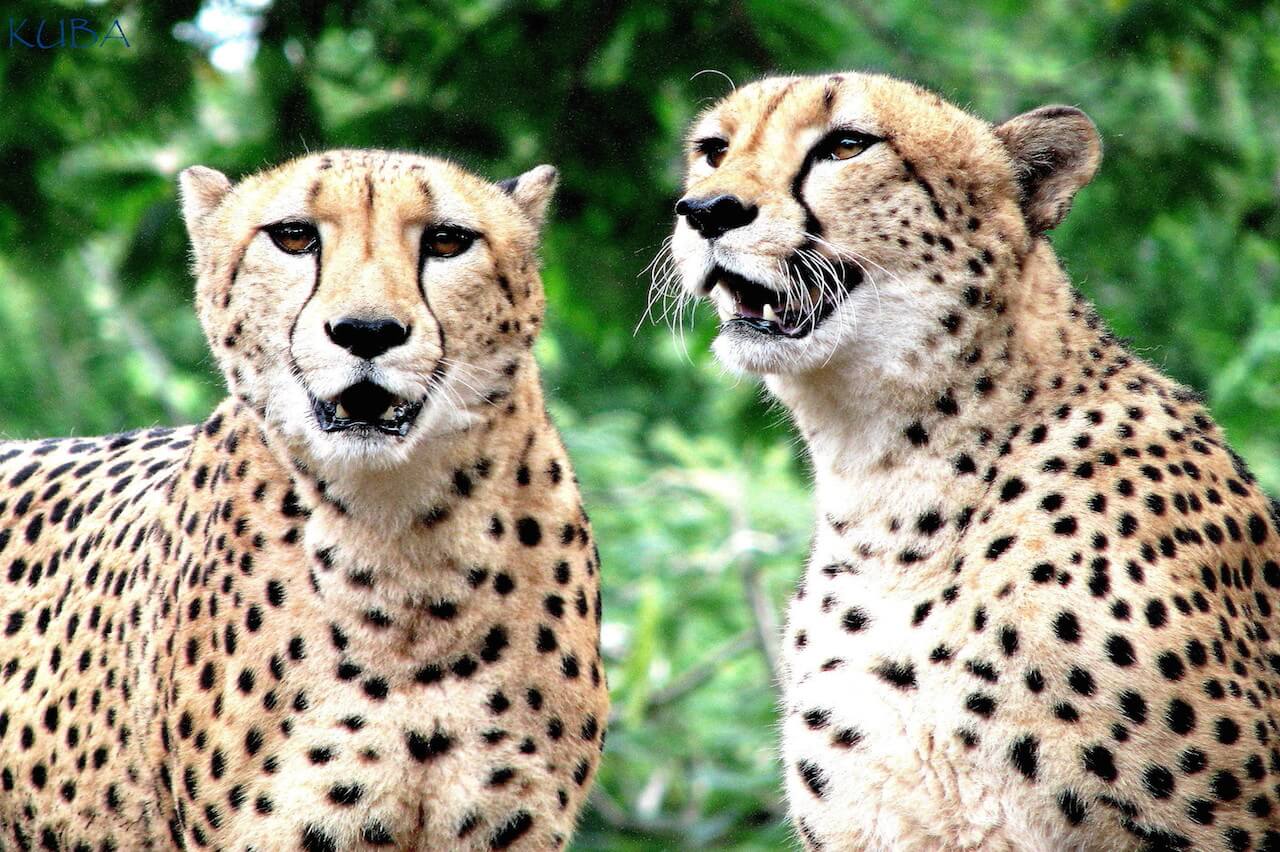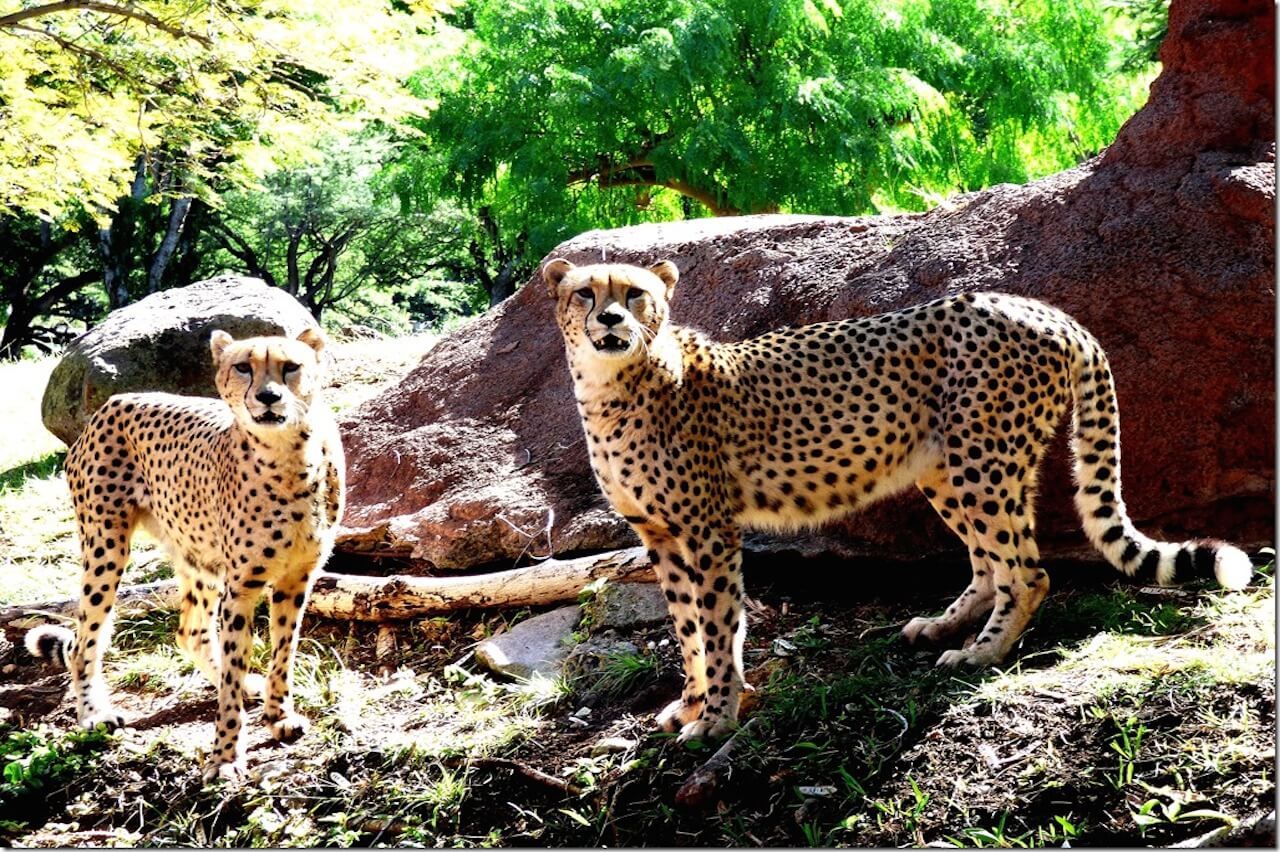acinonyx jubatus
Cheetah
About Me
Scientific Name: Acinonyx jubatus
Description
The Cheetah’s name comes from the Sanskrit word chita meaning spotted one. A cheetah has a long streamlined body, flexible spine, long legs, a long tail that acts as a rudder, an enlarged heart, large lungs and semi retractable blunt claws which aid the cats traction and turning ability at high speed. Its eyes are physically adapted for speed, enabling it to spot distant prey and follow it with pinpoint precision before racing in to kill.
Fun Facts
- The cheetah’s body is specialized for speed and it is the fastest land animal, the speed of a hunting cheetah averages 40 mph during a chase.
- The cheetah originated about 4 million years ago, long before other big cats and was once common throughout Europe, North America, Asia and Africa.
- Kingdom: Animalia
- Phylum: Chordata
- Class: Mammalia
- Order: Carnivora
The Cheetah’s name comes from the Sanskrit word chita meaning spotted one. A cheetah has a long streamlined body, flexible spine, long legs, a long tail that acts as a rudder, an enlarged heart, large lungs and semi retractable blunt claws which aid the cats traction and turning ability at high speed. Its eyes are physically adapted for speed, enabling it to spot distant prey and follow it with pinpoint precision before racing in to kill. The cheetah has a small rounded head with a delicate skull and jaw compared with the lion and leopard.
Distinctive black stripes extend from the inner corners of the eyes to the mouth. Its coat is pale tan to a tawny gold with beautifully spotted round black markings of fairly uniform size. Demand for their skins is one of the reasons they have disappeared from much of their historical range. The coat is somewhat coarse, with hair slightly longer at the nape, forming a short mane.
A cheetah weighs between 88-143 pounds (39-65 kg). Its head and body together measure 44 to 53 inches (112-135 cm). The tail is 26 to 33 inches (66-84 cm). Males tend to be slightly larger than females.
Cheetahs are found in southern and eastern Africa with Namibia having the largest population of about 2,500. Their range is confined to narrowing islands of savanna and similar vegetation zones south of the Sahara. A relic population of a few hundred may exist in the northern Arabian Peninsula and Northwest Afghanistan.
They do not inhabit forests, but their habitat varies widely. Cheetahs can be found in savannas, open woodlands and in the semi-desert areas. They make ready use of any elevation, such as a termite mounds, kopjes or acacia trees which dot the landscape, in order to get a good view of its territory and potential meal.
Female and male cheetahs live very different lifestyles. Two groups exist in the wild populations: the family group which is made up of a female and her cubs and the male group. When the female is without cubs, she will live a solitary life. The female is not aggressive to others of her kind, and will retreat rather than fight. Female territories will often overlap and young females will occupy the same territory as their mother. Females have a much larger range than males.
The male group is made up of 2 or 3 siblings, that form coalitions which will live and hunt together for life. They share a strong social bond with one another. Unrelated males may also sometimes form groups to defend larger territories. Young males will seek out an area at a great distance from their mother. Territories are scent marked and intruders will be attacked. Males and females only mix to mate.
Cheetahs hunt by day, preferring to hunt at dawn and dusk (crepuscular). They do not usually ambush their prey or approach to within springing distance. Instead, they stalk their prey to within about 100 yards (100m). As the herd starts to run and panic it triggers a killing response in the cheetah. A cheetah depends entirely on speed when hunting; knocking over the running animal by hooking a leg under the animal using its sharp dew claw, or by knocking the animal over. Cheetahs can reach a speed approaching 70 mph(+110 kph); however this speed can be maintained for only a few hundred yards or for about one minute. If it is forced to run longer than a minute, it usually gives up the chase. A cheetah can accelerate from 0 to 45 mph (0 to 72kph) in 2 seconds. They are only successful 50% of the time while hunting.
The Cheetah is the fastest land animal, the next fastest being the North American pronghorn antelope. It is quiet and shy, cannot roar, seldom fights, and purrs when contented. Its main enemies are the lion, leopard, hyena and baboon.
The Cheetah preys mainly on small gazelles and antelope, hares, and ground birds; Thompson’s gazelle being their food of choice. Prey is quickly consumed before other predators can steal it.
An average litter of two to five cubs is born after a 90-95 day gestation. The cubs are born unusually small at 10 oz. (280 g), because their mother would be unable to hunt if she carried them longer. By the eleventh day after birth the cubs eyes are open. The mother will move them to a different den every few days which helps to reduce the risk of a predator such as a lion, hyena or leopard sniffing them out. Even with these precautions, the cub mortality rate during the first three months is as high as 90% in many places. The mother must leave her cubs alone sometimes for up to 48 hours while hunting for food.
When the cubs are about six weeks old, they are brought out of their hidden den and will accompany their mother from then on. Weaning begins at three months and they will begin eating the prey she provides. On average, fewer than one-third of the cubs survive to adulthood. Cubs will stay with their mother from 13 to 24 months. The average life span of a cheetah (radio-collared female) in the wild is 6.9 years, while in captivity the average age increases to 11.7 years.
There are seven recognized subspecies of cheetah, distinguished by subtle differences in their coats. The most striking is the king cheetah with spots that have been modified into wide discontinuous bars.
The cheetah originated about 4 million years ago, long before other big cats and was once common throughout Europe, North America, Asia and Africa. They disappeared about 10,000 years ago from North America when major climatic changes took place. Fossil evidence has been found in what is now Texas, Nevada and Wyoming. The cheetah also disappeared from Europe and most of those in Asia and Africa also vanished. The present populations are derived from inbreeding by those very few surviving and closely related animals. This has led to the present state cheetah genetics: every one is nearly identical.
Cheetahs are easily tamed. Sumerians were the first people known to tame cheetah and Egyptians deified them. Throughout history they have been kept in captivity. Akbar the Great of India kept 9,000 cheetah in his 45 year reign (1555-1600 AD). Despite his efforts to breed them, only one litter was produced during that time. They have been used by the Pharaohs, royalty and even by the emperor Charlemagne for hunting and as symbols of nobility.
The cheetah is an endangered animal. Fewer than 12,00 cheetah exist in their natural habitat. Many see these animals as a threat to livestock and are shot, trapped or poisoned. Encroaching farmland and cattle ranching have pinched off vast areas of cheetah habitat and along with this habitat destruction, the over hunting of prey animals has also added to the cheetahs rapid decline.
Other Mammals
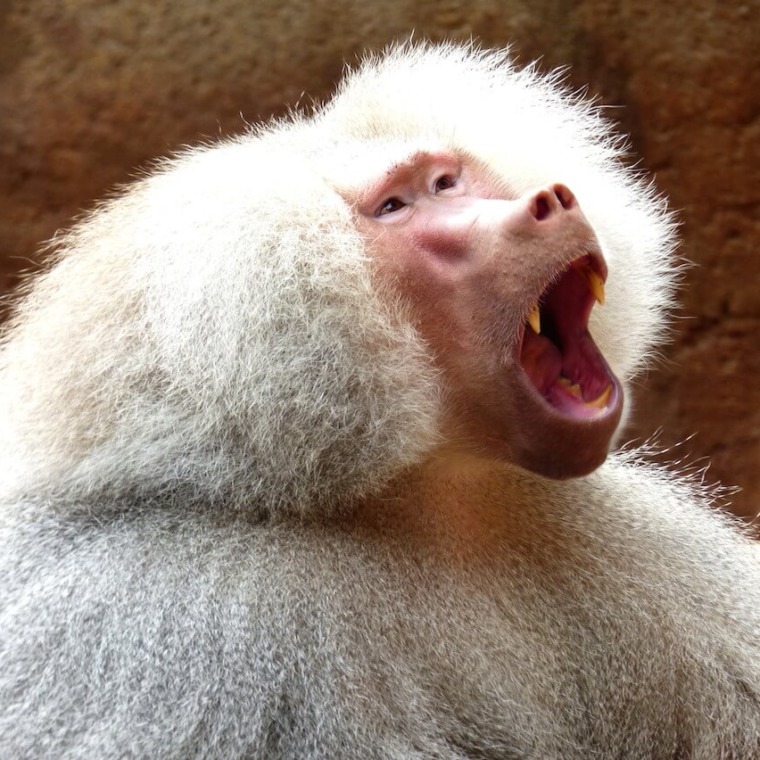
Sacred Baboons are common throughout northeastern Africa, but are extinct in the Nile region and Egypt, where they originally received their name and were worshiped by the ancient Egyptians.
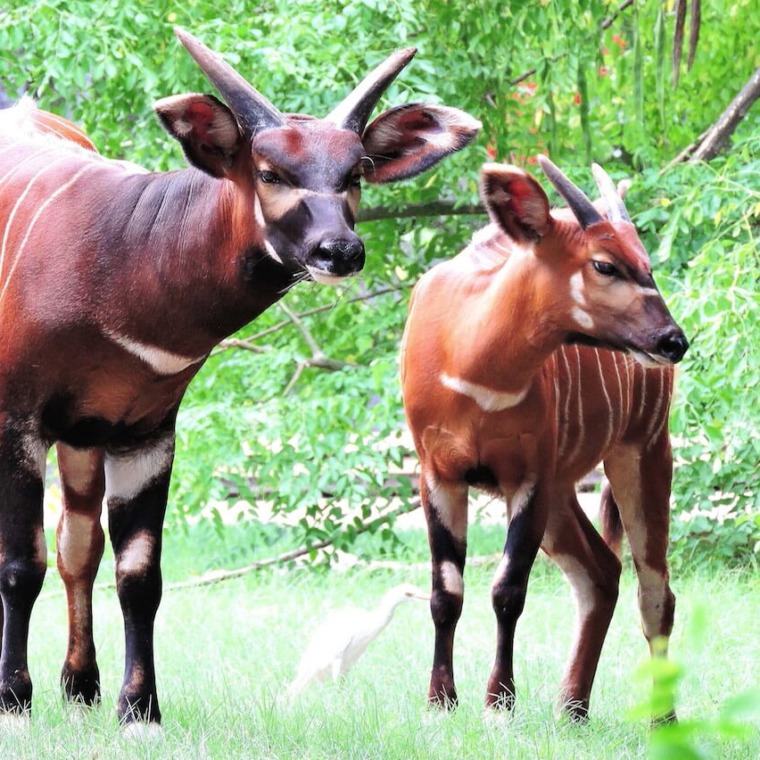
Bongo are most active at dawn and dusk, and often forage near the edges of wooded areas. They normally shy in the wild and flee into the forest for cover at the slightest provocation.
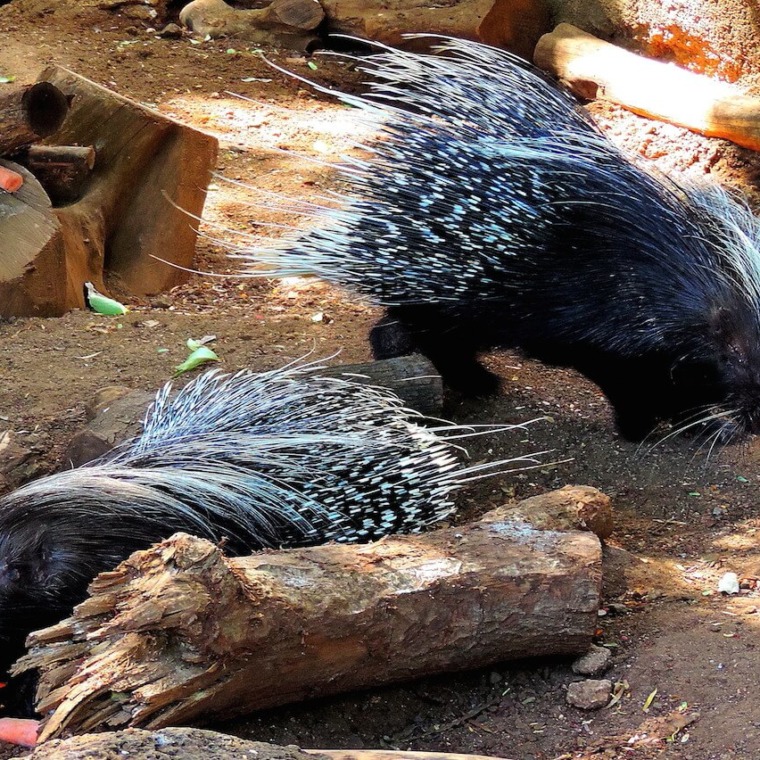
The North African crested porcupine is nocturnal. They are very adaptable and can be found in forests, on plantations, in rocky or mountainous areas as well as in deserts.
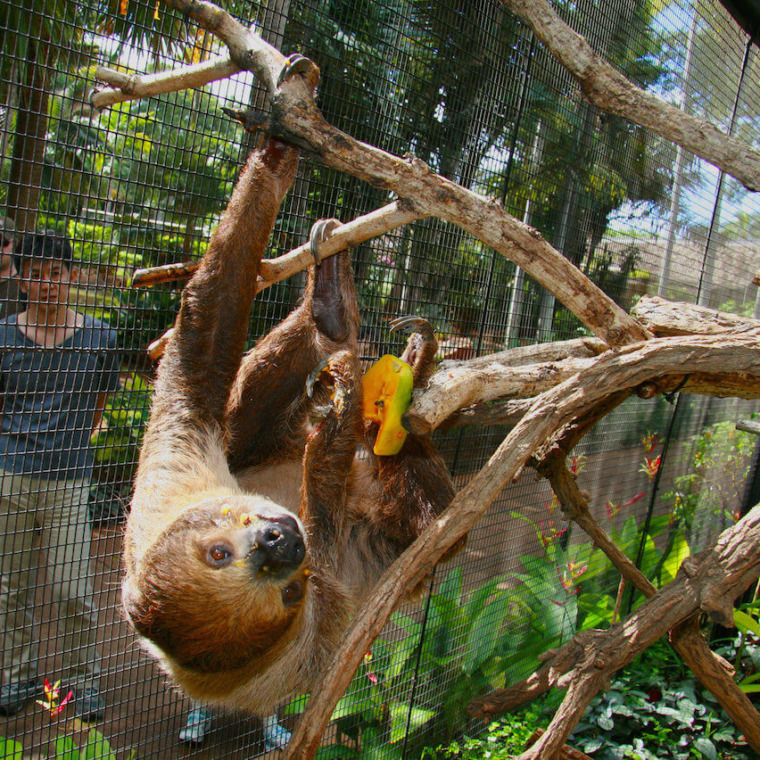
Sloths are found in Central and South America in the rain forest canopy. The Linne’s two-toed sloth is found in such countries as Nicaragua, Columbia, Venezuela, Surinam, Guyana, French Guiana, North Central Brazil, and Northern Peru.
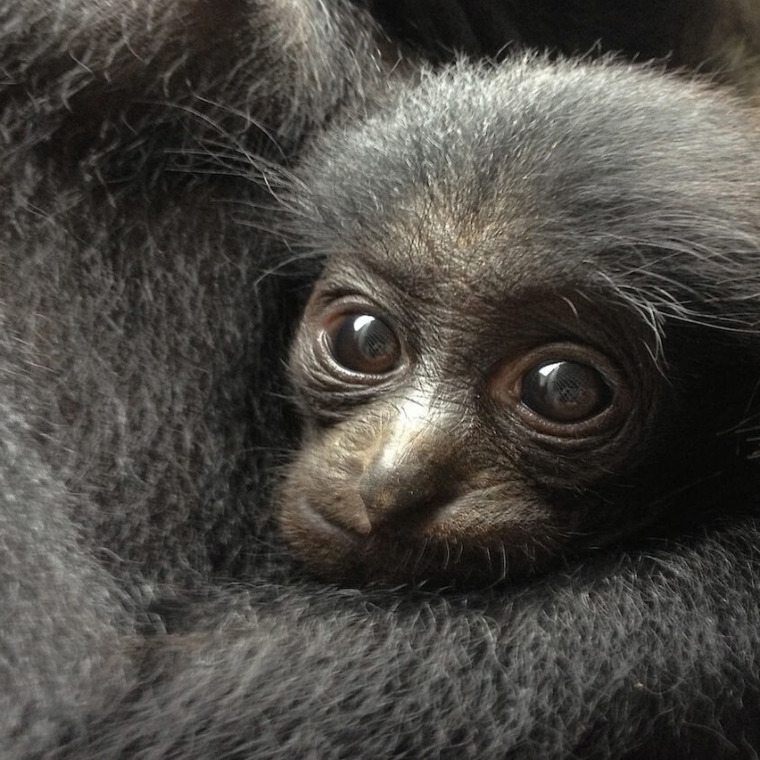
Siamangs range through southeastern Asia and are found in some numbers in the Malay Peninsula and Sumatra.


